Fusion dishes are foods that blend the elements of different cuisines, namely ingredients and preparation techniques. The resulting culinary creations usually have a distinct taste and food presentation, but they are still evocative of the parent dishes.
The fusion of dishes is an age-old phenomenon. Historically, hybrid dishes could be born out of cuisines with close cultural or geographical ties and became natural to locals.
However, modern chefs can create culinary fusions from unrelated cuisines to showcase their restaurant innovations.
Cross-cultural cooking employs various types of ingredients, such as meat, rice, wheat flour, dairy products, vegetables, and various condiments.
Fusion dishes range from main dishes to appetizers and desserts, with savoriness and sweetness as dominant tastes. These dishes can be stews, grilled dishes, dumplings, stir-fries, snacks, cakes, and pastries.
Boiling, stir-frying, baking, braising, grilling, simmering, and frying are widely used techniques for cooking dishes in fusion cuisines worldwide.
Thanks to their innovative and flexible nature, food mashups can fit into many types of diets, such as gluten-free, vegetarian, and vegan.
Do you want to know more about fusion dishes? If so, join me as I explore the history behind fusion cuisines, their motivators, and popular fusion cuisines.
The next topics will deal with the common types of hybrid dishes, their preferred cooking techniques, the art and science of making them, their roles in hospitality, and the future of fusion cuisine.
I will also delve into the relationship between fusion dishes and traditional dishes as well as street food dishes.
Scroll down now and start learning about fusion dishes! Don’t forget to use the interactive filters for convenient illustrations.
List of Fusion Dishes with Filters

Bánh includes various Vietnamese cakes, pastries, noodles, etc., often made from rice or wheat flour, and encompassing both sweet and savory varieties; each has unique ingredients, preparation, and cultural value.

Bánh bao is a Vietnamese steamed bun made with yeasted dough and a savory ground pork filling.
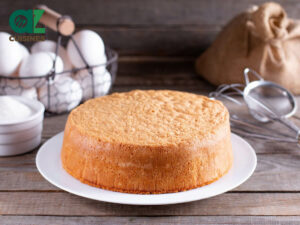
Bánh bông lan is a light and airy Vietnamese sponge cake, often flavored with various ingredients.

Bánh bột chiên is a Vietnamese dish of Chinese origin, consisting of fried rice flour dough served with pickles and soy sauce.
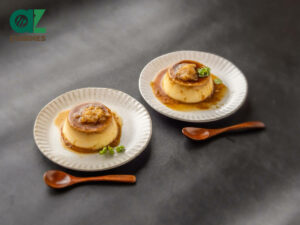
Bánh flan is a beloved Vietnamese dessert made from eggs, milk, and caramel.
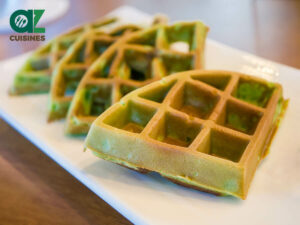
Bánh kẹp lá dứa is a Vietnamese waffle with harmonious hints of coconut milk and pandan leaves.

Bánh mì is a Vietnamese sandwich with meats, pickled veggies, and sauces in a short baguette.

Bánh pâté chaud is a Vietnamese pastry that consists of a flaky puff pastry shell filled with savory minced meat.
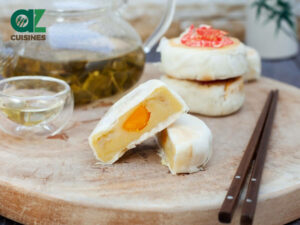
Bánh pía is a Vietnamese treat featuring a flaky pastry crust and various sweet or savory fillings.

Bánh tro is a traditional Vietnamese pyramidal dumpling made from glutinous rice soaked in ash water.
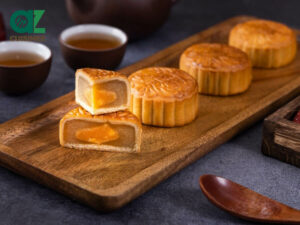
Bánh trung thu is a traditional Vietnamese mooncake with two varieties of sticky or baked pastry.
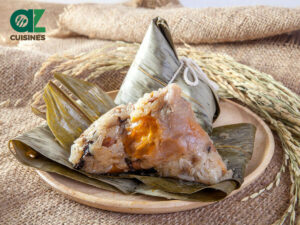
Bánh ú is a Vietnamese glutinous rice dumpling, savored in sweet or savory varieties and significant in Tết Đoan Ngọ.
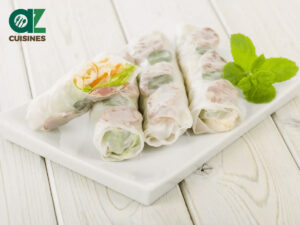
Bò bía is a Vietnamese spring roll with vegetables, Chinese sausage, and egg, wrapped in a thin crepe and served with a sweet sauce.
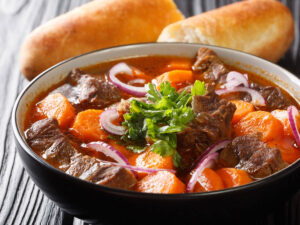
Bò kho is a spicy South Vietnamese beef stew, made with beef, carrot, lemongrass, and garlic.
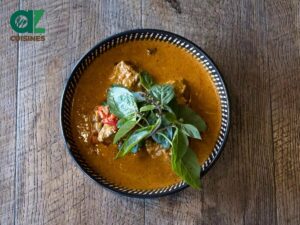
Cà ri bò is a popular Vietnamese beef curry, often served with French bread, fresh rice vermicelli, or rice.
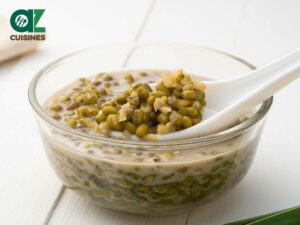
Chè đậu xanh is a sweet Vietnamese dessert soup made with mung beans and sugar, often served with coconut milk.

Chè trôi nước is a Vietnamese dessert featuring glutinous rice balls in a sweet ginger-flavored sweet soup.
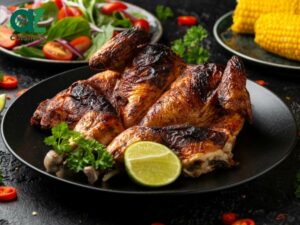
Chicken tabaka is a Georgian dish of pan-fried, flattened chicken.
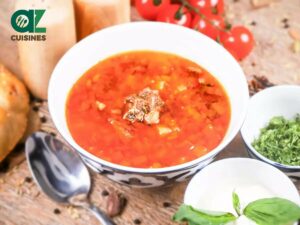
Chorba is an extensive collection of rich soups or stews in many Asian, African, and European countries.

Dumpling soup is a dish category with dumplings in broth.
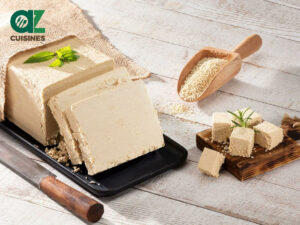
Halva is a confectionary from Persia which is also popular in Asia, Middle East, Mediterranean, the Balkans, and the Caucasus.
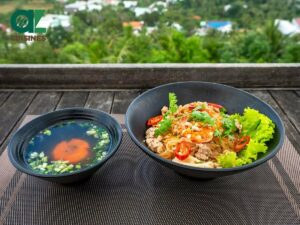
Hủ tiếu Nam Vang is a noodle soup that originated from Cambodia and was created by the Khmer people using a pork bone broth base with chewy rice noodles and toppings.
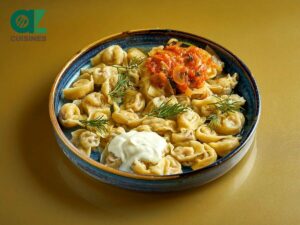
Joshpara is a filled dumpling in the Middle East, Central Asia, and South Caucasus.

Kuksu is a cold noodle of Korean popularized in Uzbekistan thanks to the Korean people.
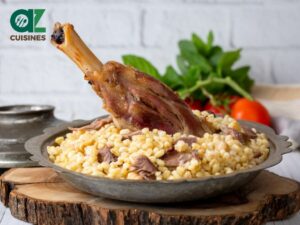
Lamb Tandoori is a Turkish grilled dish featuring slow-cooked lamb with vegetables, often served with bread.
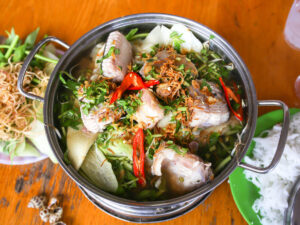
Lẩu is a Vietnamese communal dish with a simmering pot in which diners cook and share meats, seafood, and veggies.
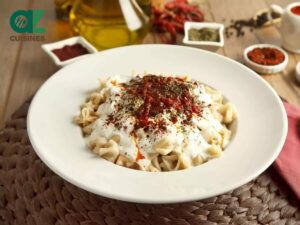
Manti is a dumpling version of the Central Asia region with spiced meat.
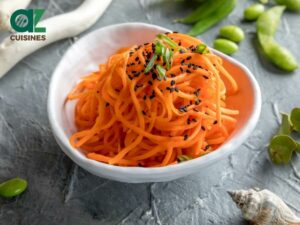
Morkovcha is a carrot salad of the Koryo-saram Korean communities created in Russia.

Pilaf is a rice dish (or wheat) popular in many countries around the world, combining grains with various broths, spices, meat, and vegetables.

Sâm bổ lượng is a Vietnamese herbal and fruit dessert soup, known for its sweet taste and healthful properties.

Tàu hũ nước đường is a silky Vietnamese tofu dessert, served with sweet ginger syrup.
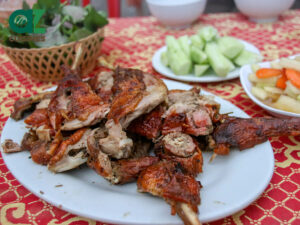
Vịt quay is a Vietnamese culinary specialty consisting of marinated duck that is slow-roasted to achieve crispy skin and tender, flavorful meat.
Fusion Dish Images
What Is the Historical Context of Fusion Dishes?
Here’s a brief overview of how historical factors have contributed to the development of fusion dishes through the ages:
Ancient Trade Routes and Early Exchanges
Since ancient times, trade routes have facilitated the exchange of ingredients and cooking techniques between different cultures. As traders and travelers move along these routes, they share recipes, resulting in culinary fusions.
The Silk Road, Indian Ocean trade, and various trade routes between the Old World and New World played an important role in blending many culinary traditions.
Colonialism and Imperialism
Colonial powers often introduced or popularized new ingredients and foodstuffs to their colonies, which were then incorporated into local cuisines. For example, beef was only commonly used in Vietnam after the French arrival.
In addition, the cuisines of the colonizers and the colonized often merged into fusion dishes, such as the case of Anglo-Indian foods.
Migration
Immigrants often blend the culinary traditions of their home countries with those of their new homes by innovating with the available ingredients.
Diasporas have been a significant factor in the development of fusion cuisine in multicultural societies like the US and various Southeast Asian countries.
However, even countries with a highly homogeneous population can still have influential hybrid cooking traditions, such as Vietnamese-Chinese, Tex-Mex, Russian-Korean cuisines, etc.
World Wars
The movement of troops during World Wars introduced soldiers and local populations to different food cultures. For instance, American soldiers serving in Europe and Asia during World War II made many American foods available to the natives.
The reverse was also true: Americans tasted and experienced many local foods, even bringing some of them back.
In addition, the many changes occurring after these historical events were important factors fueling the rise of hybrid dishes.
What Are the Driving Factors of Fusion Dishes?
Many elements are responsible for helping hybrid dishes achieve new popularity around the world. Here are the most notable factors.
Globalization
The post-WWII increase in global interconnectedness made it easier to find foods from other countries and experiment with them.
Adaptation
A core principle of hybrid dishes is to prepare foreign dishes with available ingredients and tastes. This makes exotic foods more palatable to local people and allows for the use of fresh, locally sourced components.
Cultural and Social Integration
Food mashups naturally arise when people from different cultural backgrounds interact frequently and accept each other.
For example, immigrants often blend the cooking styles of their native countries with those of their new homes, creating unique fusion dishes.
Innovation and Creativity in Culinary Arts
Fusion cuisine is a useful vehicle for numerous chefs to express their creativity and vision. Reinventing existing dishes into something new and exciting is challenging yet rewarding.
Demand for Unique Dining Experiences
A prime motive for chefs to innovate with food mashups is that consumers increasingly clamor for unique and novel dining experiences. And fusion cuisine, with its unexpected combinations and flavors, excellently caters to this desire.
Economic Factors
Using local food ingredients is always more cost-effective than importing items from abroad, making dishes from fusion cuisines more financially attractive.
In addition, successful hybrid food creations can help restaurants appeal to a broader customer base or differentiate themselves in a crowded market.
To know more about popular fusion cuisines around the world, the next part is exactly what you need.
What Are Common Fusion Cuisines?
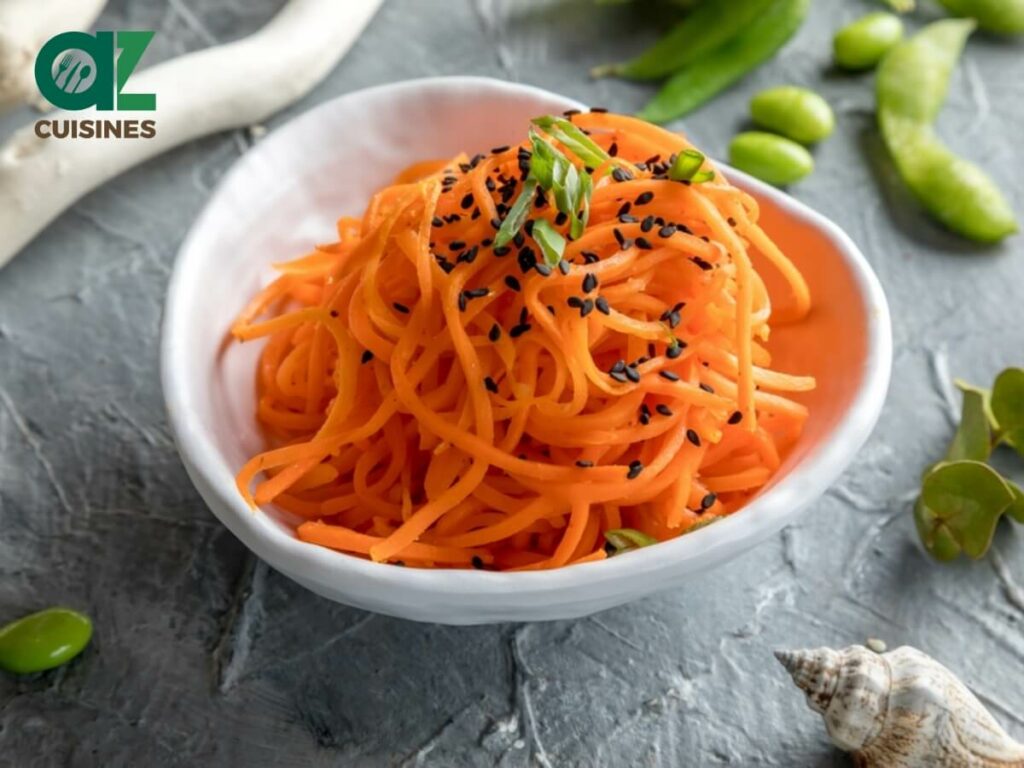
While the world boasts many hybrid cuisines, many are more well-known than others. Below are the most popular names.
American-Chinese Fusion
It emerged from the Chinese immigrant communities in the United States and has evolved significantly over time.
Good examples are General Tso’s chicken, chop suey, and fortune cookies.
Vietnamese-Chinese Fusion
Dishes with Chinese roots have a significant presence in Vietnamese cuisine.
Many traditional soups (both sweet and savory), roasted dishes, and cakes and pastries are Vietnamese-Chinese fusions.
Italian-American Cuisine
Delicacies reflect the adaptation of Italian immigrants to American ingredients and conditions.
Dishes like spaghetti and meatballs, chicken Parmesan, and New York-style pizza are ideal examples.
Russian-Korean Fusion
This cuisine developed due to the migration of Koreans to Russia, particularly in the Far East region, which led to the blending of Korean and Russian cooking elements.
Tex-Mex Fusion
A blend of American and Mexican cuisine, particularly from the culinary traditions of the Mexican-Americans living in Texas.
This cuisine features dishes like nachos, burritos, and chili con carne, combining Mexican ingredients with an American twist.
Do you know which types of foods are the most used for making fusion dishes? Read on for more information!
What Are Common Types Of Fusion Dishes?
Many fusion dishes in worldwide cuisine fall into the following categories.
- Stews: Stews made with meat and vegetables are relatively easy dishes to adapt to local cuisines.
- Grilled Dishes: Grilled meat, fish, poultry, or vegetables are popular in many countries around the world, giving rise to many different versions.
- Dumplings: Originally created in China, dumplings are now present in many varieties worldwide.
- Stir-fries: Stir-fried dishes are usually found in cuisines influenced by Chinese cooking.
- Snacks: Snacks are tasty, bite-sized pieces of food that can be cooked in many ways for various occasions of the day.
- Cakes and Pastries: Baked goods are a popular dish type for experimenting with new ingredients due to their flexibility.
Next, let’s learn about classic methods for preparing fusion dishes.
What Are Popular Cooking Methods of Fusion Dishes?
People typically employ the following techniques to prepare food mashups.
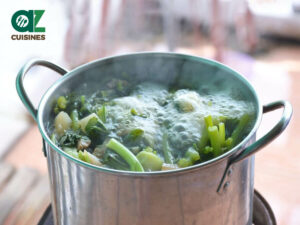
Boiling
Boiling is the preferred technique for making certain soups, cakes, and meat-based dishes. In dishes made by other methods, the ingredients can still be boiled at the start to unlock the flavors.
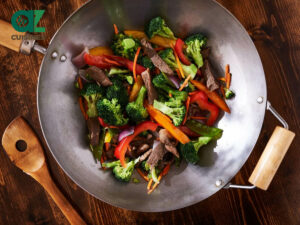
Stir-frying
Stir-frying originated in China and is widely used in fusion dishes with Chinese influences.

Baking
In fusion cooking, baking usually applies to cakes, pastries, and similar dishes.
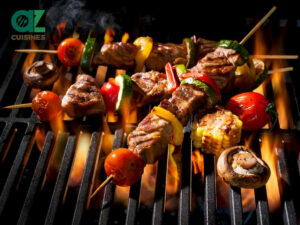
Grilling
Grilling is particularly popular in making fusion dishes that are also street food items.
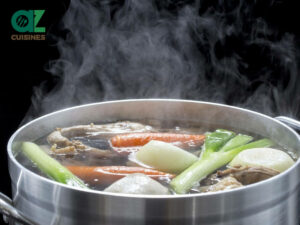
Simmering
Many types of dishes are simmered to perfection, such as soups, stews, and curries.
Choosing the right cooking techniques is no easy task for chefs engaging in blended cuisine; there is a great deal of art and science behind making fusion dishes.
What Is the Art and Science of Creating Fusion Dishes?
Anyone who wishes to create novel culinary creations from existing dishes must follow the principles below.
Balancing Flavors and Textures
Fusion dishes are all about how to combine flavors and textures from different cuisines in a way that they complement each other. This requires a deep understanding of how such culinary elements work and the willingness to experiment.
For example, bánh mì mixes flawlessly the crispiness of baguettes with crunchy pickles, savory cold cuts, and fragrant herbs in Vietnamese cuisine.
Respecting the Original Cuisines
While fusion cooking is about innovation, it’s also important to respect the parent dishes. This means understanding their cultural and historical context and not just mixing elements randomly.
Techniques in Fusion Cooking
Fusion cooking often involves applying cooking techniques from one cuisine to ingredients or recipes from another. Similar to the case with tastes and textures, care and research are necessary to pick out the best methods.
When these rules are observed, fusion cuisine is easily a mainstay of the modern restaurant industry.
How Important Is Fusion Cuisine in the Restaurant Industry?
The increasing significance of hybrid cuisine in hospitality consists of the following roles.
Dining Trends and Popularity
Unique dishes resulting from blending the culinary forces can help restaurants attract attention and stay ahead of competitors.
Visually appealing fusion dishes are often shared on social media, increasing a restaurant’s visibility and popularity.
Challenges and Opportunities for Chefs
Inventing hybrid dishes from available recipes poses the challenge of innovating and respecting traditional versions. Balancing the flavors and adapting them to the local palate can be difficult.
However, such dishes also help chefs showcase their skills and promote cultural exchange and understanding through food.
Customer Reception and Critique
Fusion dishes can educate customers about different cuisines and provide them with the excitement of trying something new and different.
However, the reception can vary widely depending on the execution of the dish and the target audience. Some diners may critique fusion dishes as being inauthentic.
Regardless of the attitude toward fusion dishes, this kind of cuisine is here to stay, though future trends may change its characteristics.
What Are Future Trends in Fusion Cuisine?
Hybrid dishes of tomorrow lean toward the following shifts.
Sustainability and Ethical Sourcing
As global awareness of environmental issues grows, fusion cuisine is likely to increasingly incorporate sustainable ingredients, such as seasonal and locally sourced ingredients.
Chefs might combine traditional recipes with ingredients that are less water-intensive or leave a lower carbon footprint.
Health Considerations
Modern fusion dishes tend to focus on balanced nutrition and cater to various dietary needs, such as gluten-free, keto, or plant-based diets.
Increased Role of Technology
Advanced cooking techniques and food science will play a significant role in fusion cuisine. New techniques (like sous-vide or molecular gastronomy) and alternative foods (like lab-grown meat) can be combined with traditional cooking methods.
Influence of Social Media
Social media platforms, such as Instagram and TikTok, have become crucial tools for chefs and food enthusiasts to share their creations and evaluate customer reception.
As a result, the visual aspect of food can become as important as taste and nutrition. Viewer feedback can help the creators to perfect their dishes.
Experimental Pairings and Flavors
As more and more previously little-known cuisines are getting the limelight, daring and unconventional pairings based on them are bound to appear.
Future chefs will leave no stone unturned during their quest to create unique and memorable dining experiences.
The growth of fusion dishes doesn’t mean the decline of traditional foods since there is a close relationship between the two kinds of cuisines.
What Is the Relationship between Fusion Dishes and Traditional Dishes?

There is a mutual relation between hybrid cuisine and traditional cuisine, which I will explore shortly.
Traditional Dishes as the Inspiration of Fusion Dishes
Obviously, traditional dishes provide a foundation of flavors, techniques, and ingredients that fusion cuisine builds upon.
Many cooking elements are common in one cuisine but exotic in other places, and by combining these elements, novel dishes can emerge to amaze the consumers.
The Effect of Fusion Dishes on Traditional Dishes
Blending different culinary elements is a popular way to enrich the national cuisine. Many traditional dishes began as fusion dishes before being accepted by the general population.
Such foods can even become national dishes, such as bánh mì in Vietnam or ramen in Japan.
In addition, the innovative nature of mashup dishes keep the traditional cuisine relevant and interesting to the ever-changing palate of the modern world.
Traditional dishes aren’t the only category influenced by fusion cuisine; street food dishes are a similarly powerful force in this aspect.
How do Fusion Dishes Influence Street Food Dishes and Vice Versa?
Fusion dishes share a dynamic and reciprocal relationship with street food dishes in many ways.
Innovation
Fusion cuisine often arises from street food culture. Cooks often experiment with combining elements from different culinary traditions due to many reasons, such as suiting local tastes or using more readily available components.
Creativity
Unlike traditional dishes, street food dishes are very flexible and enjoy relatively more freedom in terms of authenticity concerns.
Trendsetting and Popularity
When a fusion dish becomes popular in the street food scene, it can influence restaurant menus and even home cooking.
Conversely, a fusion dish that gains popularity in restaurants can trickle down to street food vendors who adapt it for their menus.
Do you still want to learn more about fusion dishes? Check out the FAQs section right away!


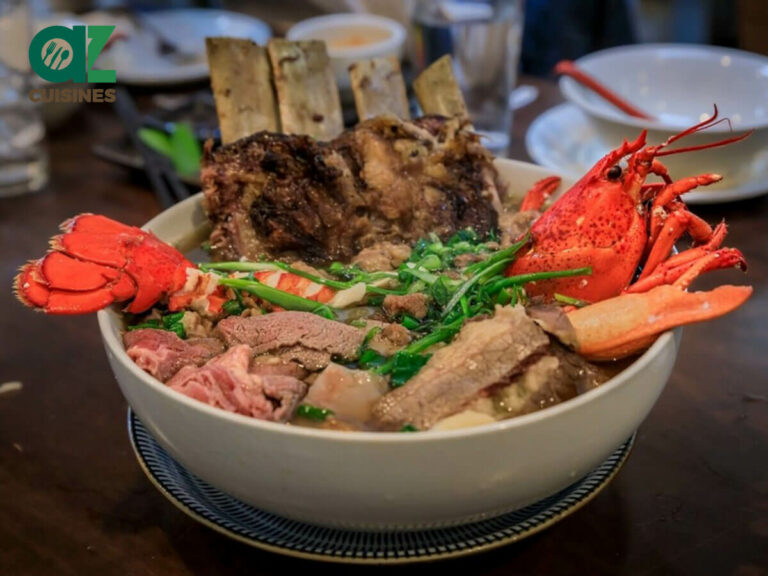
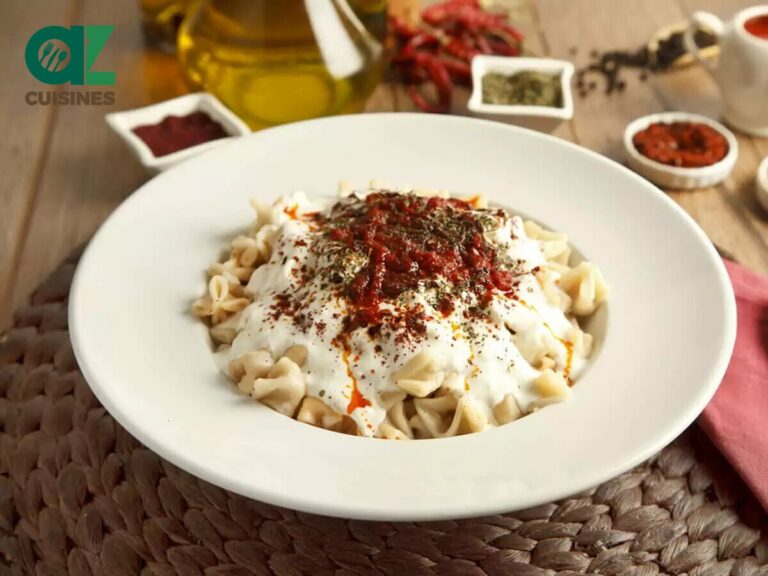

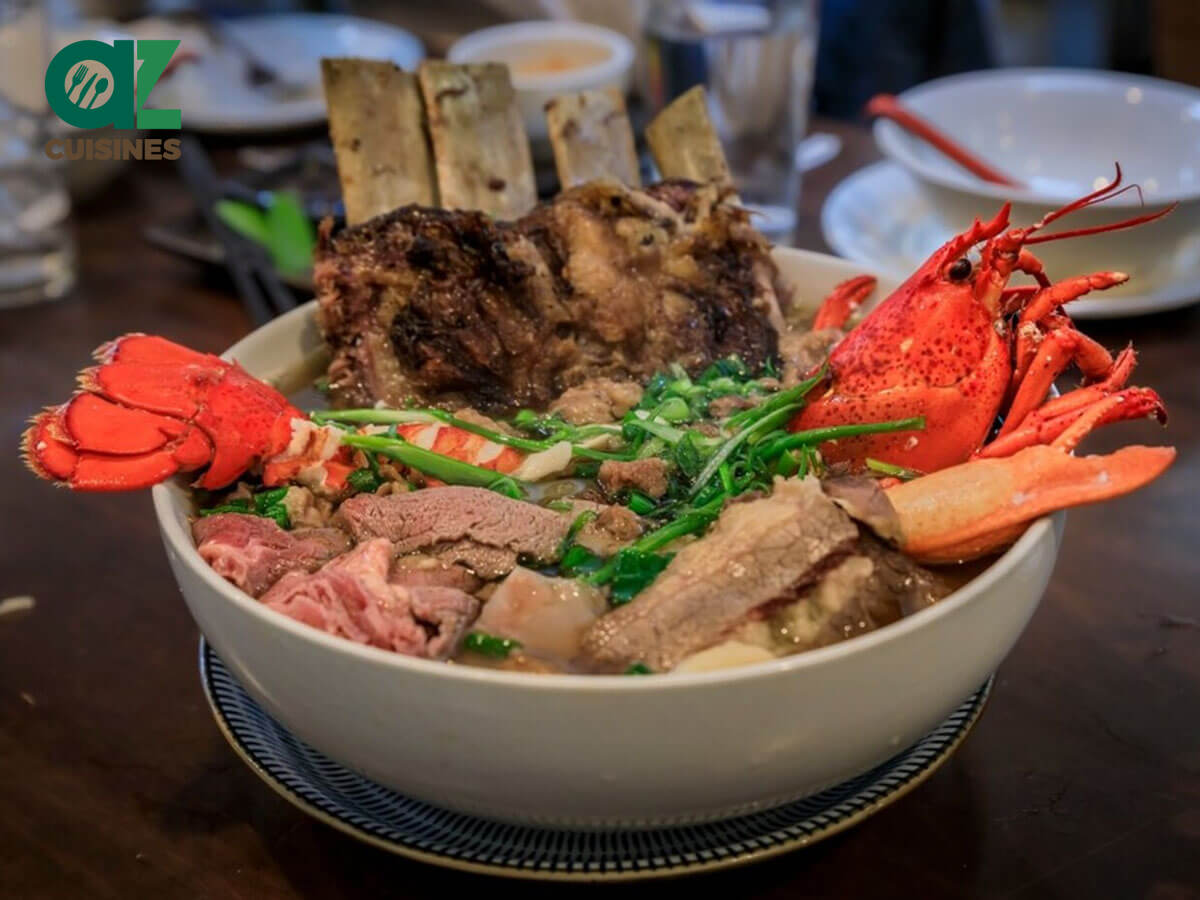
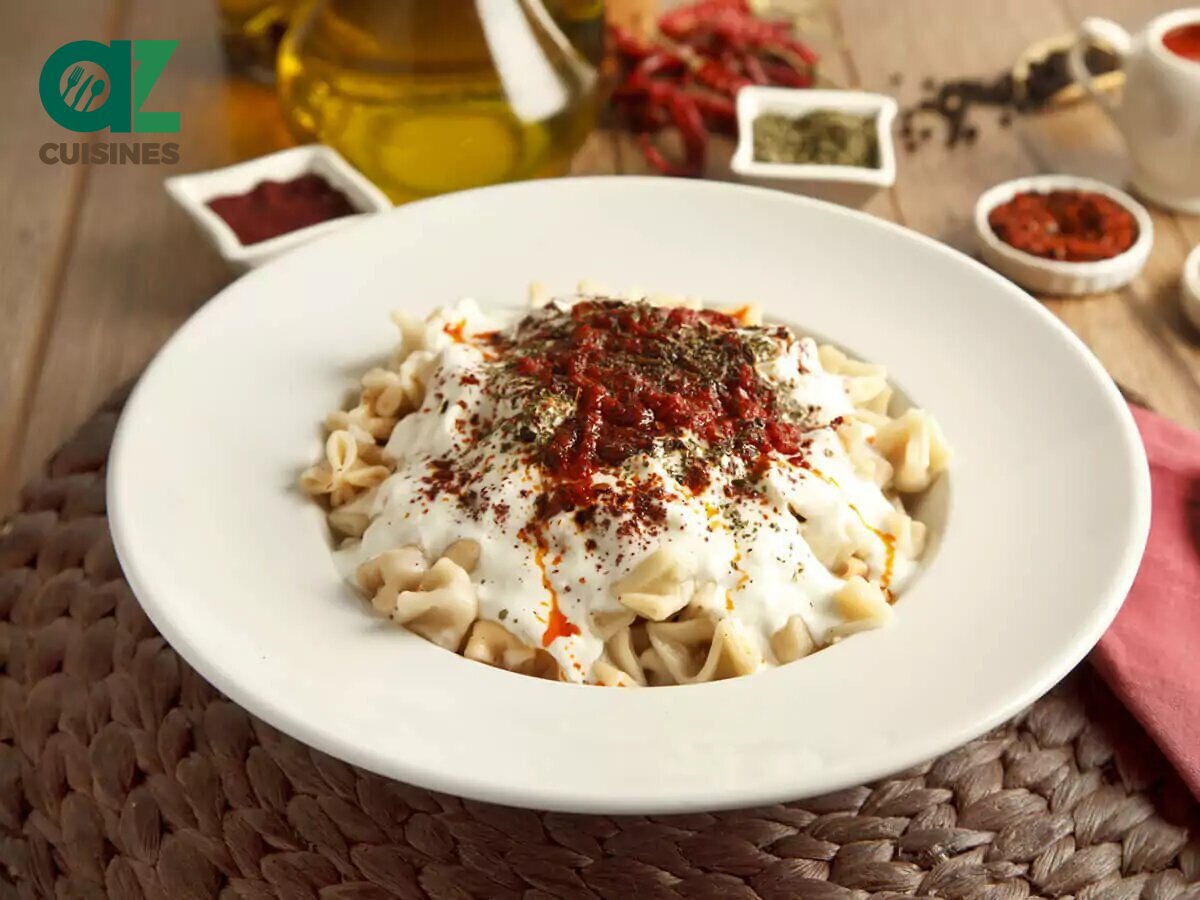
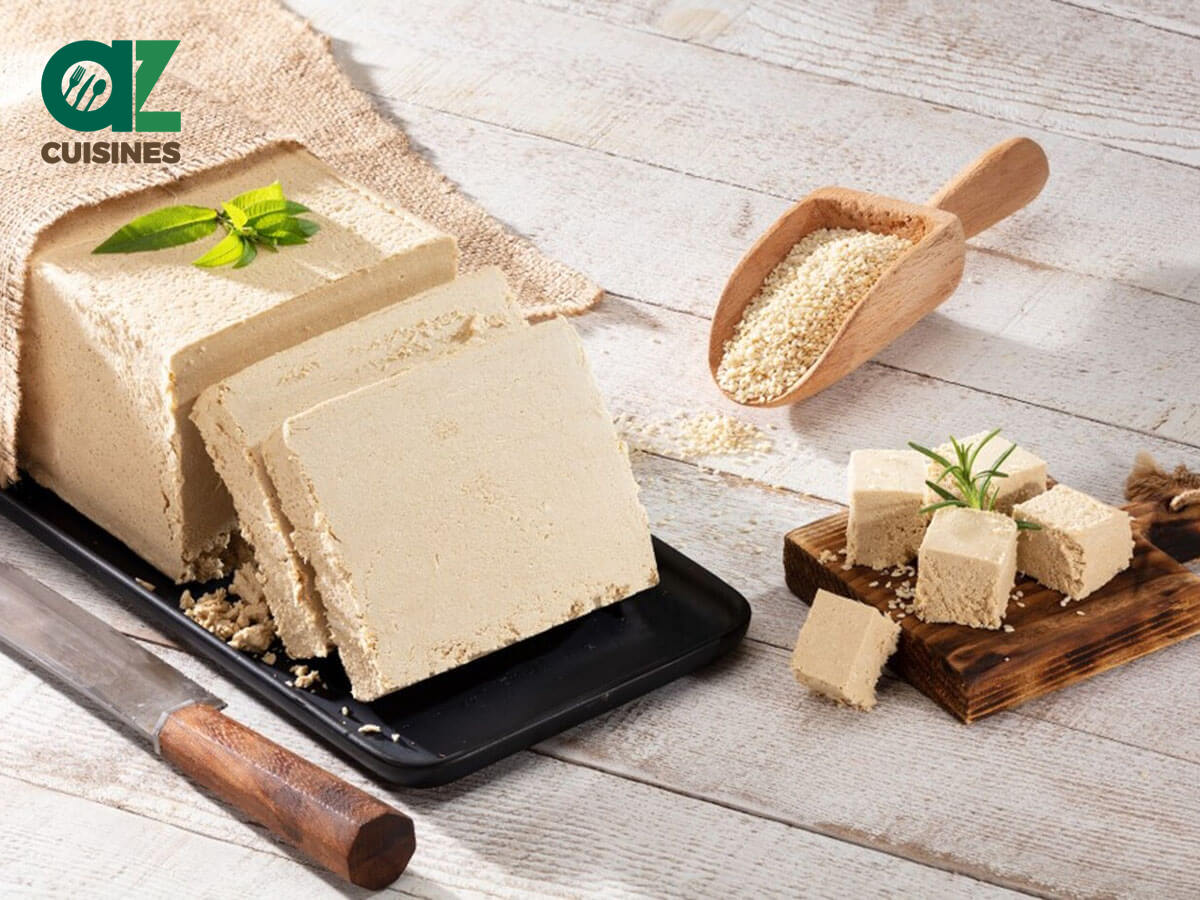
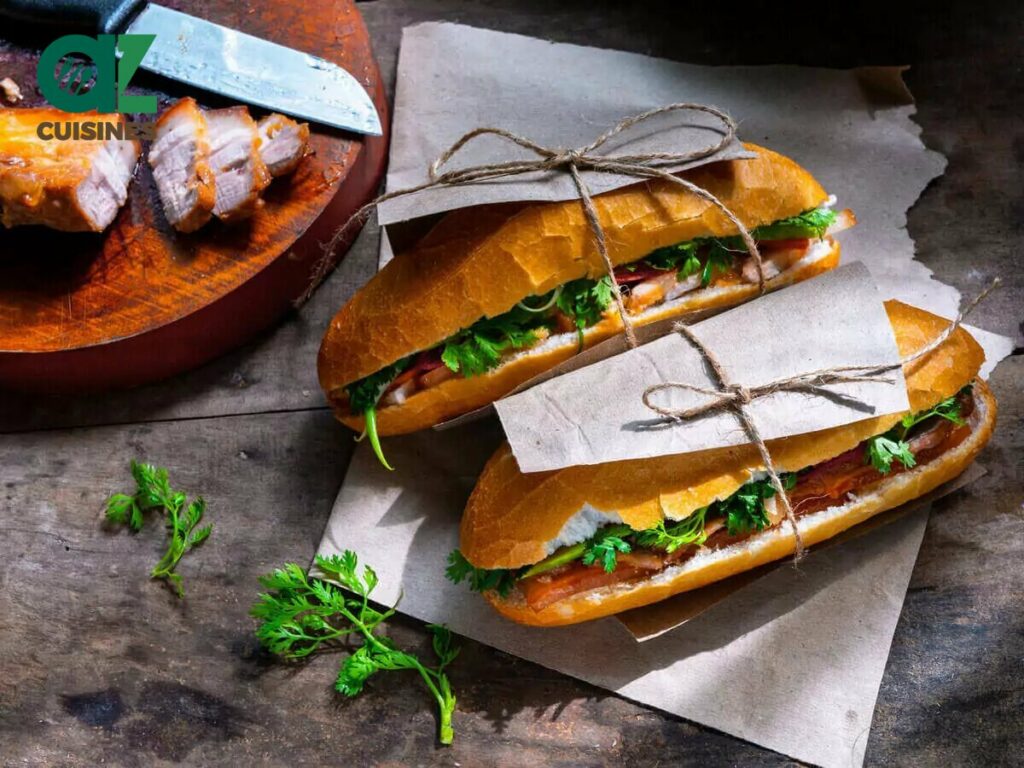
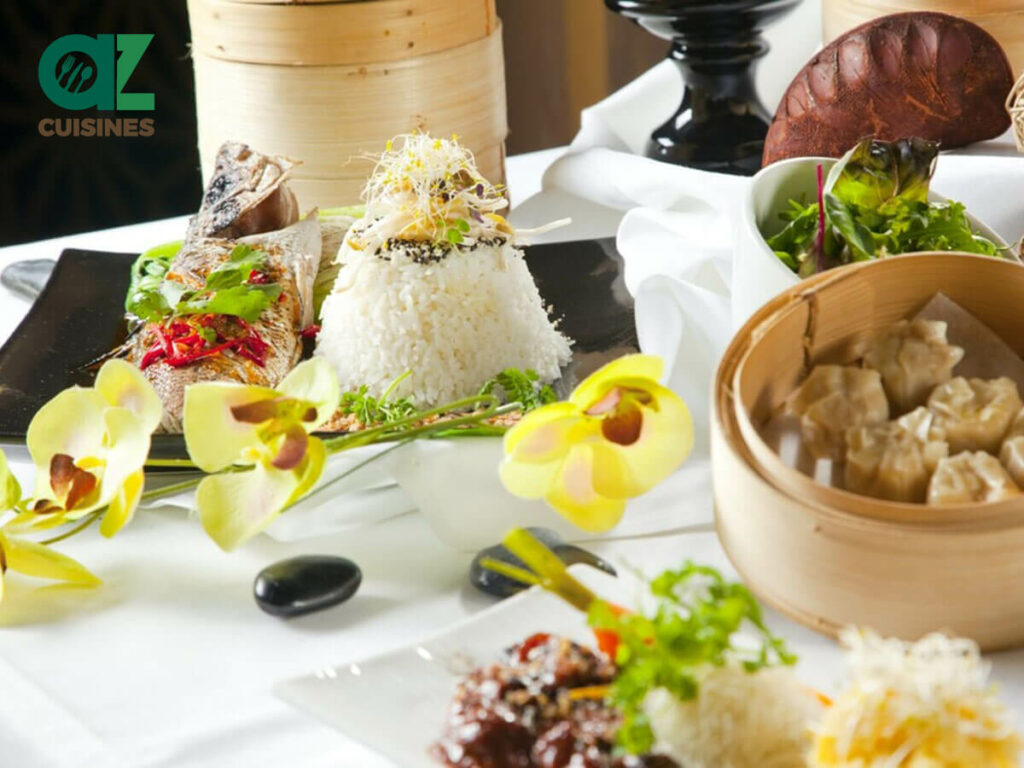
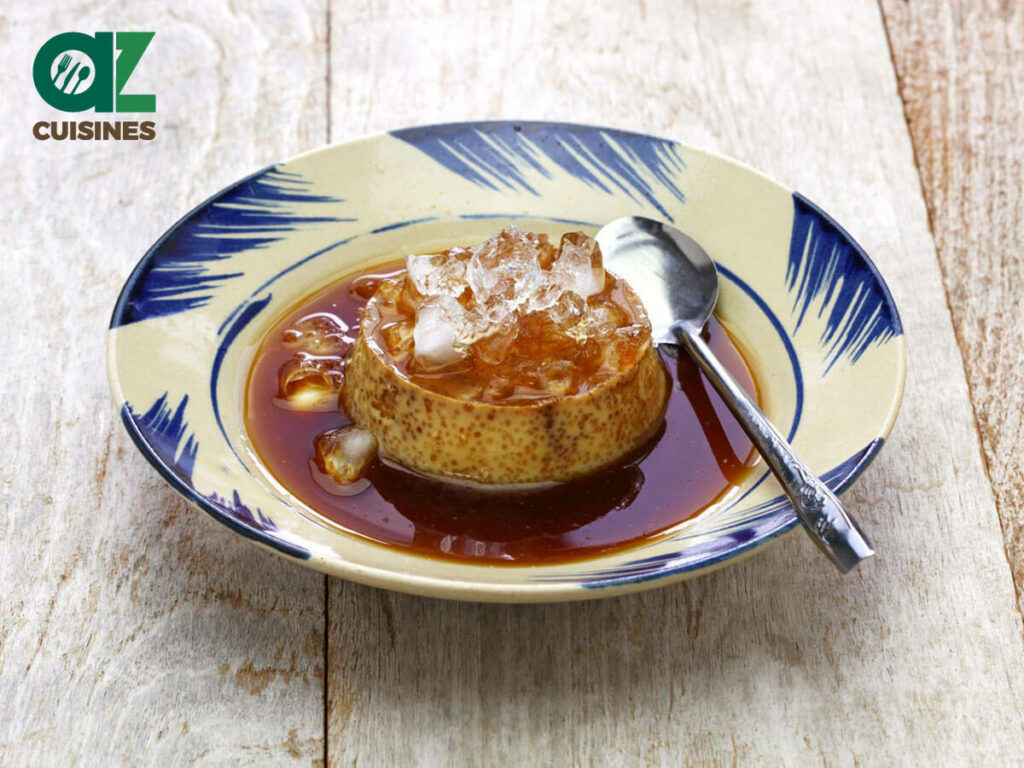

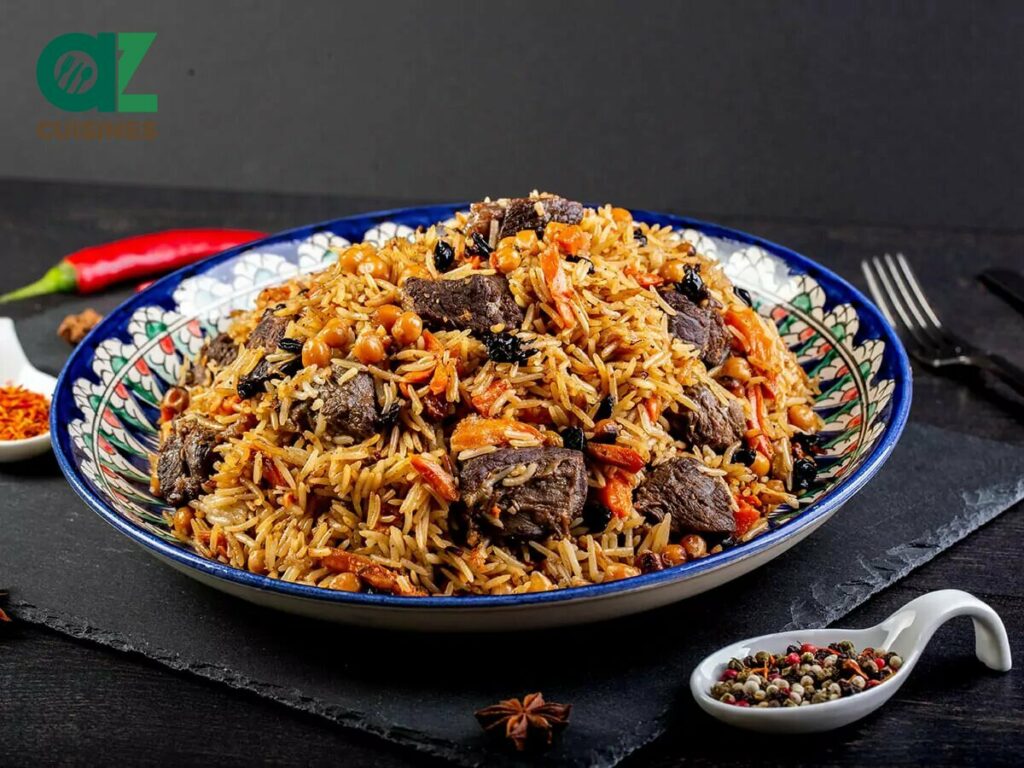
Adam Sam
Senior Food and Drink Editor
Expertise
Food Writer & Recipe Developer, Recipe Tester, Bartender, Cooking-video Maker, Editor In Chief
Education
Adam Sam, an experienced food writer and recipe developer, is passionate about blending diverse culinary traditions, national dishes, and innovative beverages, showcasing his proficiency in both traditional and modern recipe testing.
As the Editor-in-Chief, he elevates culinary content from street food to fine dining, focusing on Western cuisine and types of drinks at azcuisines.com, and is professional in creating engaging cooking videos that simplify complex dishes and ingredients.
His passion for food is evident in his writing, where he uniquely merges various cultures, traditions, and contemporary trends, skillfully combining classic recipes with modern cooking methods.